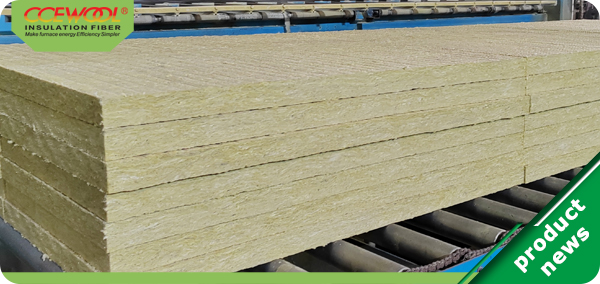Rockwool, also known as mineral wool, is a widely used insulation material known for its exceptional thermal properties. It is popular in construction and industrial applications due to its ability to reduce transfer effectively.

Rockwool insulation works by minimizing heat transfer through conduction, convection, and radiation. Let's delve into each of these heat transfer mechanisms.
Conduction is the process of transfer through direct contact between objects or materials. Rockwool has a low thermal conductivity, means it is a poor conductor of heat. When installed in a building or structure, rockwool acts as a barrier, limiting the transfer of heat by conduction. It prevents the heat outside from moving inside and vice versa, offering effective insulation.
Convection is the transfer of heat the movement of liquids or gases. Air is a poor conductor of heat, but it can transfer heat through convection. Rockwool insulation traps air within its fibers, creating air pockets that air movement. This limits convective heat transfer, as the trapped air acts as an insulating. As a result, rockwool helps to reduce heat transfer by convection.
Radiation is the process of transferring heat through electromagnetic waves. All objects emit thermal radiation, and this radiation transfer heat from a warmer object to a cooler one. Rockwool insulation has a highivity, meaning it absorbs and emits thermal radiation effectively. It absorbs the radiant heat energy and prevents it from penetrating through the insulation. By reducing radiant heat transfer, rockwool contributes to the heat reduction.
The thermal properties of rockwool make it highly effective in reducing heat transfer. helps maintain a comfortable and consistent indoor temperature by minimizing heat loss in the winter and heat gain in the summer. This can significantly improve energy efficiency in buildings, reducing the need for excessive heating or and lowering energy costs.
Furthermore, rockwool insulation provides additional benefits beyond heat reduction. also offers sound insulation, as the fibrous structure helps to absorb and dampen sound waves. This makes rockwool a great choice for reducing noise transmission in buildings.
Rockwool insulation is non-combustible and resistant to fire, adding a layer of fire protection to structures It has a high melting point and does not release toxic gases when exposed to flames. This makes it a safe and reliable choice for insulation in fire-prone areas.



